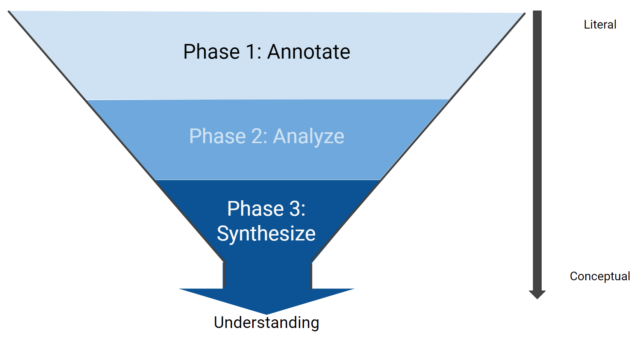FELIX (Finding Inequity in Literature and Experiment)
FELIX – An instrument for information literacy
Goal of Our Instrument, FELIX
- Help you develop critical analysis skills when reading texts.
- Help you build an intuition for identifying bias and opinions in texts.
- Measure how your skills from 1 & 2 change over the course
- Create a dataset of annotations for a corpus of documents that capture the specific instances of bias-related aspects of the component texts
FELIX is a critical reading tool we developed for BI510 IRHS to help identify hidden biases in a text. It is a structured approach to reading a text that has three phases (figure below).
- Annotate – label key passages with a controlled vocabular of hashtags
- Analysis – answer a set of short answer questions designed to identify potential sources of bias in the text
- Synthesis – a short narrative reflections about the article guided by a scaffolding question

Motivation
Claims made in texts, be they news, opinion, or scientific articles, always presume some set of assumptions are true. These assumptions may be explicitly stated within the text itself, or implicitly held by the author. In any case, the validity and veracity of the assumptions underlying a claim are not always obvious to the reader and require exploration and additional investigation to elucidate. This process of gathering information to place a text in its broader context to better understand it (sometimes called “deep”, “slow”, or “close” reading) requires time and effort, and while several strategies have been proposed, no formal or rigorous approaches to performing this type of reading are broadly accepted.
The scientific method itself is a process that may be employed to systematize a deep reading of a text. In scientific articles, important pieces of existing evidence are annotated with citations that provide the basis for the validity of a claim or assumption. However, while the same approach may be employed in fields and contexts outside scientific publications, this convention of explicitly citing prior evidence within a text is not as commonplace. It may be unclear in a text that a claim requiring substantiation has even been made, which statements are opinions vs facts, etc., thus making it difficult to know which statements to investigate. An intuition and sensibility for “sniffing out” aspects of a text that are biased or unsubstantiated may be developed with practice.
Another key component of the scientific method is data. Generally speaking, data are gathered using instruments that measure specific quantities in a standardized way thus allowing them to be meaningfully compared. For example, a ruler measures distance using a standardized scale, e.g. inches, such that any measurement taken with a ruler of the same scale may be compared, regardless of when or where the ruler is used.
The approach that we present in the case studies – FELIX (Finding inEquity in LIterature and eXperimentation) – combines these ideas of developing a systematic approach to critical analysis of text and using a standardized set of “measurements” into a tool for identifying and understanding a text with the goal of identifying potentially hidden biases.